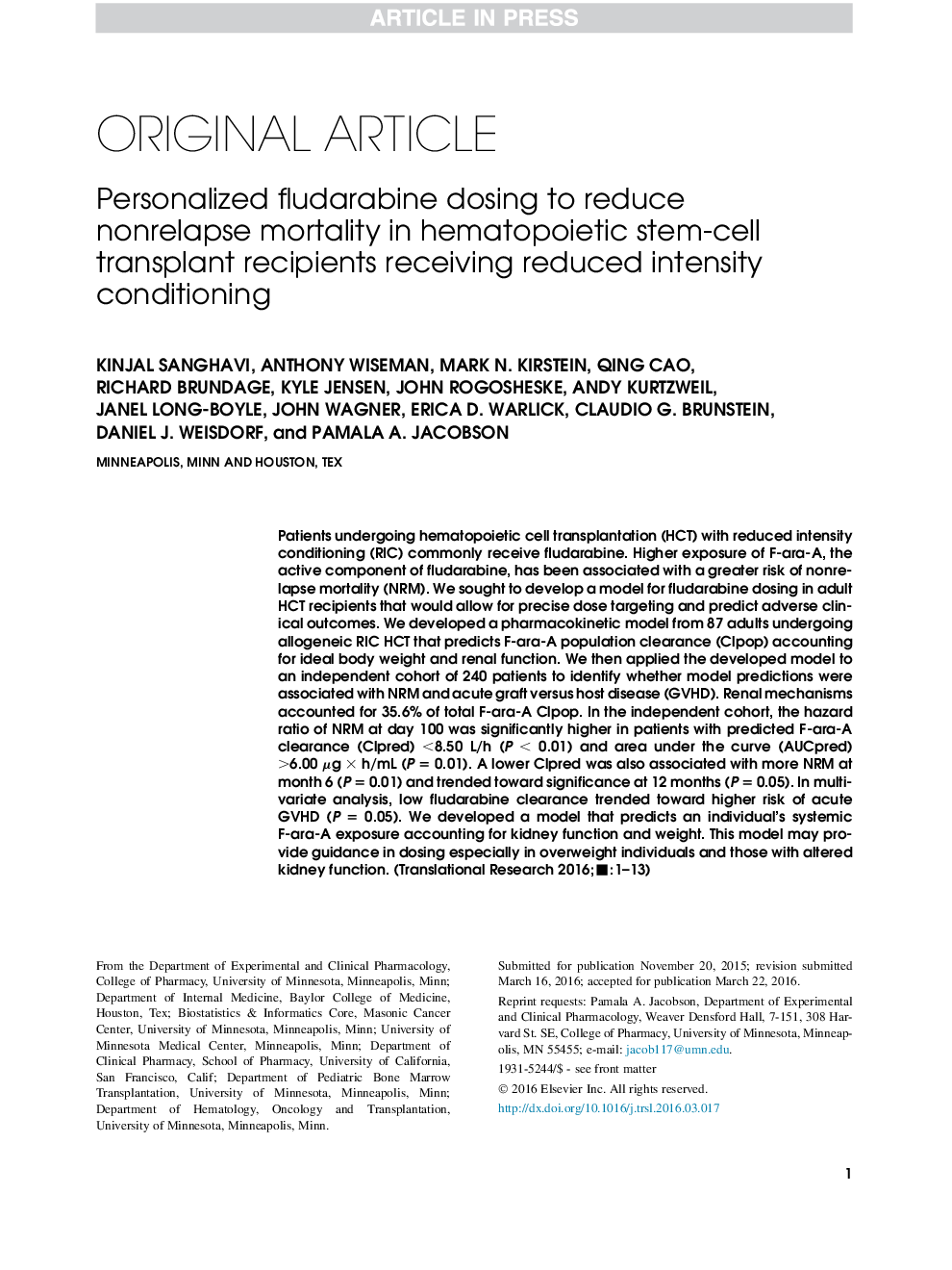| Article ID | Journal | Published Year | Pages | File Type |
|---|---|---|---|---|
| 6155986 | Translational Research | 2016 | 17 Pages |
Abstract
Patients undergoing hematopoietic cell transplantation (HCT) with reduced intensity conditioning (RIC) commonly receive fludarabine. Higher exposure of F-ara-A, the active component of fludarabine, has been associated with a greater risk of nonrelapse mortality (NRM). We sought to develop a model for fludarabine dosing in adult HCT recipients that would allow for precise dose targeting and predict adverse clinical outcomes. We developed a pharmacokinetic model from 87 adults undergoing allogeneic RIC HCT that predicts F-ara-A population clearance (Clpop) accounting for ideal body weight and renal function. We then applied the developed model to an independent cohort of 240 patients to identify whether model predictions were associated with NRM and acute graft versus host disease (GVHD). Renal mechanisms accounted for 35.6% of total F-ara-A Clpop. In the independent cohort, the hazard ratio of NRM at day 100 was significantly higher in patients with predicted F-ara-A clearance (Clpred) <8.50 L/h (P < 0.01) and area under the curve (AUCpred) >6.00 μg à h/mL (P = 0.01). A lower Clpred was also associated with more NRM at month 6 (P = 0.01) and trended toward significance at 12 months (P = 0.05). In multivariate analysis, low fludarabine clearance trended toward higher risk of acute GVHD (P = 0.05). We developed a model that predicts an individual's systemic F-ara-A exposure accounting for kidney function and weight. This model may provide guidance in dosing especially in overweight individuals and those with altered kidney function.
Related Topics
Health Sciences
Medicine and Dentistry
Medicine and Dentistry (General)
Authors
Kinjal Sanghavi, Anthony Wiseman, Mark N. Kirstein, Qing Cao, Richard Brundage, Kyle Jensen, John Rogosheske, Andy Kurtzweil, Janel Long-Boyle, John Wagner, Erica D. Warlick, Claudio G. Brunstein, Daniel J. Weisdorf, Pamala A. Jacobson,
